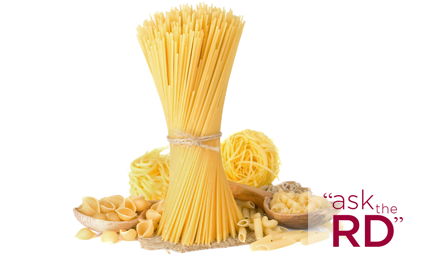Question: I use the terms “noodles” and “pasta” interchangeably—but I’m not sure that I should. Can you tell me what the difference is between the two?
Answer: Excellent question! If you’re referring to pasta, then you’re OK using either term—because pasta is a type of noodle. However, noodles are not a type of pasta. (Think about bread; English muffins are a type of bread, but bread is not a type of English muffin.)
Noodles are made from unleavened dough, typically made from flour, egg and water that has been rolled flat and cut into shapes—though we most often associate them as being long, thin strings. This dough can be made from a wide variety of ingredients, like wheat (in Chinese ramen, in Japanese udon and in Italian pasta), rice, buckwheat (in Japanese soba), or other ground meals or starches. Noodles can be:
- Boiled and drained and immediately eaten, like spaghetti topped with marinara
- Stir-fried with other ingredients, like in pad thai or lo mein dishes
- Added to soup, like pho, ramen or minestrone
- Used in casseroles, like lasagna and kugel
By tradition, pasta is made from durum wheat. In the U.S., this ingredient is often referred to as semolina—which is flour made from ground durum wheat. Semolina has a higher protein content than other flours, which helps give pasta (and other foods, like pizza dough) a heartier, chewier taste and texture. However, pastas are also available in non-traditional (but very nutritious!) varieties, like whole wheat and vegetable-enhanced (like spinach or tomato pastas). Pasta can be cut into a wide variety of shapes and sizes. Although often associated with Italian cuisine, pasta is a versatile food that can be incorporated into many dishes, like these.

